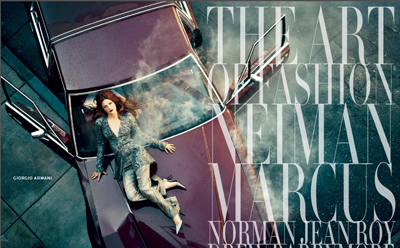- About
- Subscribe Now
- New York,
August 1, 2011

Multichannel marketing has again proved to be the biggest driver in luxury consumer purchase, outweighing online, direct mail and in-store, according to findings from a recently-released Epsilon study.
Rather than just pure retail, online or mail, multichannel marketing increased average consumer spend per order 14 percent in 2010 from 2009. Furthermore, trends in the study reflected the declining number of sales from call centers and direct mail.
“This data suggests that marketers can expect increased consumer spending especially on higher ticket categories and should shift messaging and strategy based on these trends,” said Jaymes Meena, director of analytics at Epsilon Targeting, Dallas.
“It’s no longer about a focus on promoting deals, discounts and sales,” he said. “Understanding where and how consumers spend will enable marketers to better target their primary audiences.”
Dropped calls
Luxury merchandise categories fared better in 2010 than lesser categories, based on the 626 multichannel merchants surveyed.
The fastest-growing categories in 2010 were high-end products including men’s and women’s apparel and accessories and home décor and linens.

Chanel chooses Claudia Schiffer for new eyewearcollection
Consumers are also spending more money per order, according to the study.
Significantly higher sales were achieved through multichannel buyer households with two or more purchases from members of the household.
The average spend from this group was $832 per household, which went up 14 percent from 2009 and comprised 51 percent of households surveyed.
Customers were cutting back on how much they spent in single transactions and looked for bargains, but purchased more often, per the study.
Compare this to data in 2008 and 2009, where average order values declined as frequency of purchase increased.
Although multichannel prevailed, other channels did well with driving purchase, too.
For instance, online sales have grown 6 percent over the past four years and 3 percent from 2009.
Additionally, average sales were up in all channels in 2010, which reversed a once-declining trend in the depths of the recession.
Call center or mail order sales were 36 percent more per order than online buyers, but were not as frequent.
“We found that consumers are spending again,” Mr. Meena said.
“In the study, higher-ticket categories fared better and average orders were up, which shows that the economy is bouncing back and marketers have an opportunity to gain that wallet share,” he said.
Drew channels
The results of this study bode well for the luxury industry, especially since the first half of 2011 is going considerably well (see story).
Some luxury brands have already demonstrated their multichannel marketing prowess.
For instance, the Fountainbleau Miami hotel is promoting its Labor Day packages via online and in-house advertising (see story).
Additionally, department store chain Neiman Marcus tapped actress Drew Barrymore as the next face for its Art of Fashion campaign using social media, print magazines and the retailer’s catalog (see story).

Drew Barrymore for Neiman Marcus
In terms of holiday planning, the two trends indicate that the fourth quarter of 2011 is a prime season for luxury retailers to go deeper into prospecting and have less reason to discount as much as in previous years.
Additionally, this could also mean that luxury brands should look more into marketing cross-channel rather than relying on one main mode of marketing.
Luxury brands should consider getting a head-start on their holiday campaigns, and in a multichannel manner (see story).
“The study bodes well for the luxury industry in second-half 2011, as spending is tracking up across the luxury product lines,” he said. “With the holiday season approaching, luxury marketers should take advantage of this trend and market early and post-holiday.”
Final Take
Rachel Lamb, associate reporter on Luxury Daily, New York
Share your thoughts. Click here